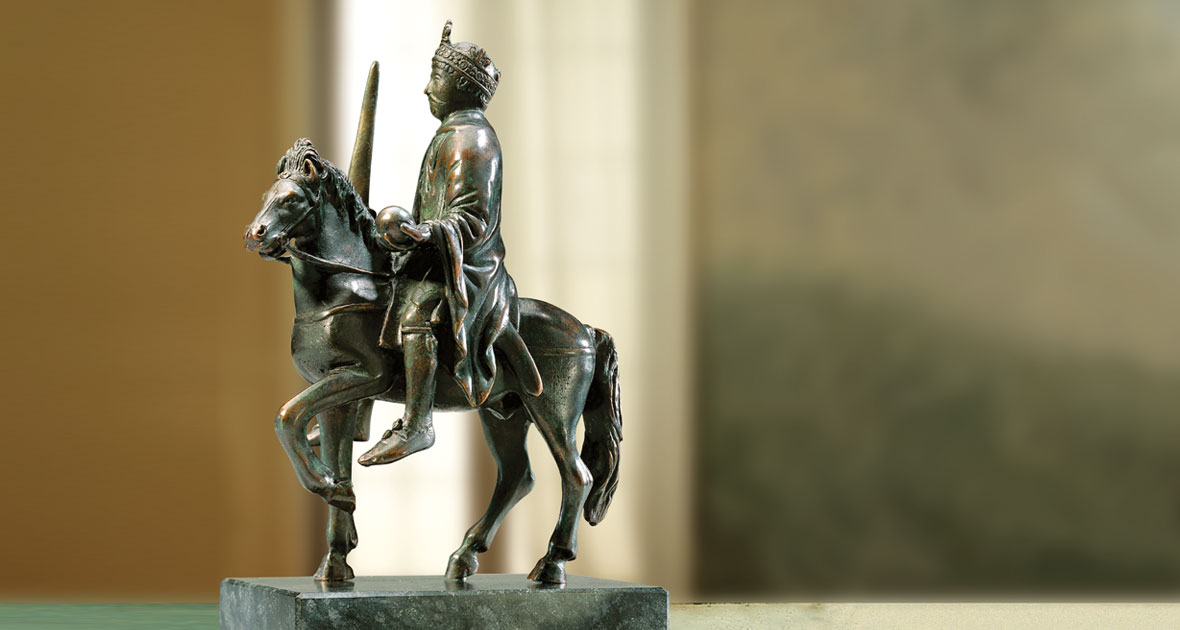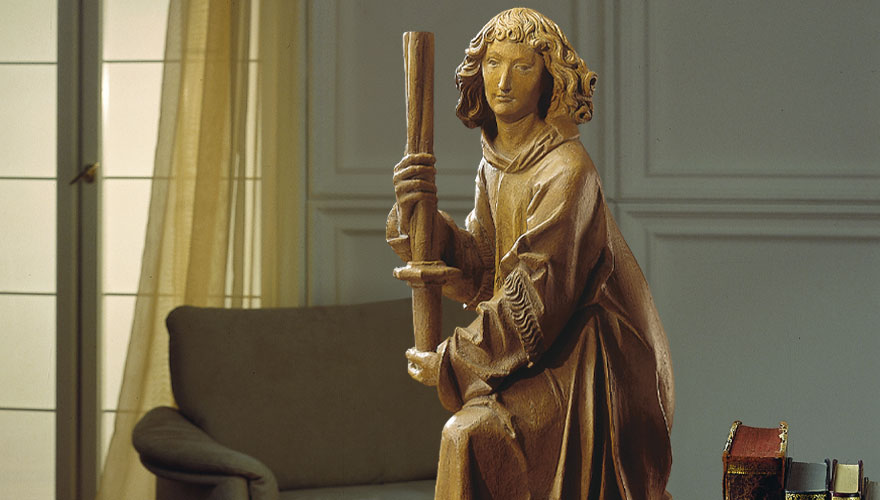
The Art of the Middle Ages: An Epoch of Spiritual Creation
The art created in Europe between the 5th and 15th centuries is known as medieval art. During this time, creativity and religious faith merged to produce breathtaking works of art that continue to be admired today.
In the Service of Religion
Following the decline of the Roman Empire, the Catholic Church gained influence and eventually became the dominant religion in Europe, becoming an integral part of European culture. Artistic forms of expression such as painting, sculpture, architecture, and book illumination were used to reflect the society shaped by feudalism and its deep connection to religion. For example, medieval art was used to tell biblical stories and spread Christian doctrine.
The artworks of this period, including depictions of the life of Christ, not only adorned church walls but were also found in magnificently illustrated books, altarpieces, and religious sculptures. The primary patrons of these artworks were not private individuals but rather the Catholic Church and the ruling nobility and clergy. Through artists, faith came alive, and people realised that art is not only beautiful to look at but also a source of inspiration and enlightenment.
The Development of Medieval Art
Medieval art evolved continuously over centuries, giving rise to various epochs, including the Romanesque and Gothic periods. While these periods had regional variations, they collectively shaped the cultural diversity and artistic richness of the entire medieval epoch. Despite the differences in the individual periods, there was one constant feature in medieval art: The usage of precious materials. For example, gold was frequently used for mosaics and panel paintings. It was, therefore, common for more money to be spent on materials than on paying the artists.
The Romanesque Art
Romanesque art developed from approximately the 10th century until the emergence of the Gothic style in the 12th century. Due to its widespread influence, Romanesque became the first medieval style found throughout Europe, albeit with regional distinctions. The Romanesque architecture is characterised by massive and sturdy buildings with small windows and thick walls. The rounded arch is also one of the most distinctive stylistic features of the Romanesque buildings. Romanesque sculpture and painting were expressive, with particular emphasis on religious iconography.
In painting, Christ was depicted as the ruler of the world, with an absence of spatial depth and simple backgrounds. As the Romanesque period drew to a close, there was an increasing emphasis on the Virgin Mary in art, which would reach its full extent in Gothic art.
The Gothic Art
Gothic art emerged in the 12th century and introduced perspective as a technique in painting, leading to more realistic representations. The arrangements, proportions and colours were used for religious symbolism. In addition to religious themes, which were already present in Romanesque art, Gothic art also embraced secular subjects such as festivals and hunting. Gothic churches were characterised by intricate ornamentation and high towers. The façades and portals of these churches were often adorned with sculptures. Another characteristic feature of Gothic architecture was the replacement of the Romanesque rounded arch by the pointed arch.
Painting in the Middle Ages: A Connection to the Divine
Medieval painting was more than just art - it was a spiritual journey to God for society. With the rise of Christianity, art in the Middle Ages took on a new focus: the worship of God and the saints. In the Romanesque period, frescoes adorned the walls of churches and cathedrals. Divinity was often depicted against a background of pure gold, which bestowed a special aura upon the holy figures. Painting played a crucial role in spreading the Christian faith and educating the faithful. Despite their often symbolic representations and stylised figures, medieval paintings laid the foundation for the further development of European art in later centuries.

Medieval Sculpture: Masterpieces of Precision
Medieval sculptures provide insight into an era where faith, creativity and artisanry merged to create timeless and breathtaking works. Medieval sculptures are renowned for their attention to detail and realism. They were often life-sized and followed the theme of biblical figures, adorning churches, and cathedrals. However, more than half of the medieval sculptures were crafted from wood to create altars and religious shrines. Stone sculptures, often polished and occasionally embellished with colour and gilding, also captivate with their special elegance and splendour.
An outstanding example of medieval sculpture is the sculpture of St Peter's Portal on the exterior of Cologne Cathedral. However, among the most impressive works of late medieval art are carvings made of alabaster. This initially soft material allowed for remarkable precision in the detail of the carving.
The Encrypted Language of Medieval Art
Medieval art was rich in symbolism and iconography, representing a secret language with profound meaning. Every element of an artwork carried a deeper, hidden message that was challenging for laypeople to decipher.
For instance, doves symbolised the Holy Spirit, lions represented Christ and lambs symbolised innocence and purity. The use of symbols allowed the artists to represent complex theological concepts in a simple and understandable way. They conveyed not only biblical stories but also societal values. Thus, art became a bridge between the earthly world and the divine. Viewers were encouraged to unveil the hidden meanings and by doing so deepen their own spiritual journey.
Artistic Anonymity
Most medieval artists are unknown and remain anonymous today. Since art was created at the behest of the Church, individual artistic identity was insignificant, unlike today. For example, many monks were not only devout servants of God but also talented artists who used their skills to spread the message of faith. Through book illumination, they created splendid handwritten manuscripts, which they artfully decorated with illustrations. They worked together in workshops and were part of a larger creative process.
